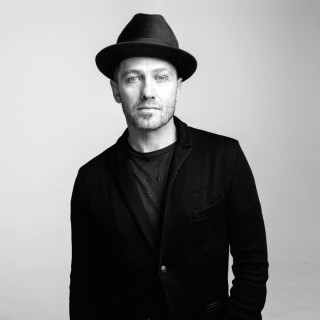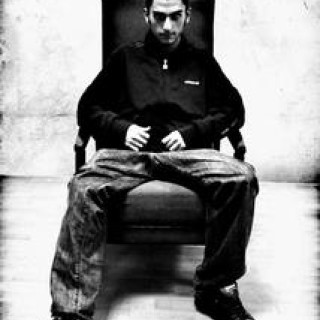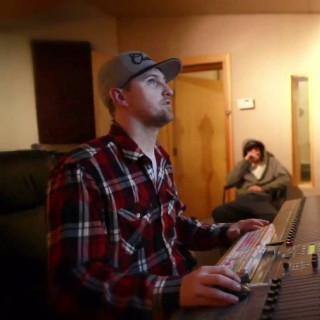
08.09.2009
175
Tekst piosenki
SO OVER YOU IS THE GREATEST ENEMY A MAN CAN HAVE AND THAT IS FEAR. I KNOW SOME OF YOU ARE AFRAID TO LISTEN TO THE TRUTH—YOU HAVE BEEN RAISED ON FEAR AND LIES. BUT I AM GOING TO PREACH TO YOU THE TRUTH UNTIL YOU ARE FREE OF THAT FEAR....
– Malcolm X
THE FEARFUL ATTITUDE
In the beginning, fear was a basic, simple emotion for the human animal. We confronted something overwhelming—the imminent threat of death in the form of wars, plagues, and natural disasters—and we felt fear. As for any animal, this emotion had a protective function—it allowed us to take notice of a danger and retreat in time. For us humans, it served an additional, positive purpose—we could remember the source of the threat and protect ourselves better the next time. Civilization depended on this ability to foresee and forestall dangers from the environment. Out of fear, we also developed religion and various belief systems to comfort us. Fear is the oldest and strongest emotion known to man, something deeply inscribed in our nervous system and subconscious.
Over time, however, something strange began to happen. The actual terrors that we faced began to lessen in intensity as we gained increasing control over our environment. But instead of our fears lessening as well, they began to multiply in number. We started to worry about our status in society—whether people liked us, or how we fit into the group. We became anxious for our livelihoods, the future of our families and children, our personal health, and the aging process. Instead of a simple, intense fear of something powerful and real, we developed a kind of generalized anxiety. It was as if the thousands of years of feeling fear in the face of nature could not go away—we had to find something at which to direct our anxiety, no matter how small or improbable.
In the evolution of fear, a decisive moment occurred in the nineteenth century when people in advertising and journalism discovered that if they framed their stories and appeals with fear, they could capture our attention. It is an emotion we find hard to resist or control, and so they constantly shifted our focus to new possible sources of anxiety: the latest health scare, the new crime wave, a social faux pas we might be committing, and endless hazards in the environment of which we were not aware. With the increasing sophistication of the media and the visceral quality of the imagery, they have been able to give us the feeling that we are fragile creatures in an environment full of danger—even though we live in a world infinitely safer and more predictable than anything our ancestors knew. With their help, our anxieties have only increased.
Fear is not designed for such a purpose. Its function is to stimulate powerful physical responses, allowing an animal to retreat in time. After the event, it is supposed to go away. An animal that cannot not let go of its fears once the threat is gone will find it hard to eat and sleep. We are the animal that cannot get rid of its fears and when so many of them lay inside of us, these fears tend to color how we view the world. We shift from feeling fear because of some threat, to having a fearful attitude towards life itself. We come to see almost every event in terms of risk. We exaggerate the dangers and our vulnerability. We instantly focus on the adversity that is always possible. We are generally unaware of this phenomenon because we accept it as normal. In times of prosperity, we have the luxury of fretting over things. But in times of trouble, this fearful attitude becomes particularly pernicious. Such moments are when we need to solve problems, deal with reality, and move forward, but fear is a call to retreat and retrench.
This is precisely what Franklin Delano Roosevelt confronted when he took office in 1933. The Great Depression that had begun with the stock market crash of 1929 was now at its worst. But what struck Roosevelt was not the actual economic factors but the mood of the public. It seemed to him that people were not only more fearful than necessary but that their fears were making it harder to surmount adversity. In his inaugural address to the country, he said that he would not ignore such obvious realities as the collapse of the economy and that he would not preach a naive optimism. But he implored his listeners to remember that the country had faced worse things in its past, periods such as the Civil War. What had brought us out of such moments was our pioneer spirit, our determination and resolve. This is what it means to be an American.
Fear creates its own self-fulfilling dynamic—as people give in to it, they lose energy and momentum. Their lack of confidence translates into inaction that lowers confidence levels even further, on and on. “So, first of all,” he told the audience, “let me assert my firm belief that the only thing we have to fear is fear itself—nameless, unreasoning, unjustified terror, which paralyzes needed efforts to convert retreat into advance.”
What Roosevelt sketched out in his speech is the knife’s edge that separates failure from success in life. That edge is your attitude, which has the power to help shape your reality. If you view everything through the lens of fear, then you tend to stay in retreat mode. You can just as easily see a crisis or problem as a challenge, an opportunity to prove your mettle, the chance to strengthen and toughen yourself, or a call to collective action. By seeing it as a challenge, you will have converted this negative into a positive purely by a mental process that will result in positive action as well. And in fact, through his inspiring leadership, FDR was able to help the country shift its mind-set and confront the Depression with a more enterprising spirit.
Today we seem to face new problems and crises that test our national mettle. But just as FDR made the comparison to even worse times in the past, we can say that what we are facing is not as bad as the perils of the 1930s and the subsequent war years. In fact, the reality of twenty-first-century America is something more like the following: our physical environment is safer and more secure than any other moment in our history. We live in the most prosperous country in the world. In the past only white males could play the power game. Now millions upon millions of minorities and women have been given entrance to the arena, forever altering the dynamic—making us the most socially advanced country in that regard. Advances in technology have opened up all kinds of new opportunities; old business models are dissolving, leaving the field wide open for innovation. It is a time of sweeping change and revolution.
We face certain challenges as well. The world has become more competitive; the economy has undeniable vulnerabilities and is in need of reinvention. As in all situations, the determining factor will be our attitude, how we choose to look at this reality. If we give in to the fear, we will give disproportionate attention to the negative and manufacture the very adverse circumstances that we dread. If we go the opposite direction, cultivating a fearless approach to life, attacking everything with boldness and energy, then we will create a much different dynamic.
Understand: we are all too afraid—of offending people, of stirring up conflict, of standing out from the crowd, of taking bold action. For thousands of years our relationship to this emotion has evolved—from a primitive fear of nature, to generalized anxiety about the future, to the fearful attitude that now dominates us. As rational, productive adults we are called upon to finally overcome this downward trend and to evolve beyond our fears.
THE FEARLESS TYPE
THE VERY FIRST THING I REMEMBER IN MY EARLY CHILDHOOD IS A FLAME, A BLUE FLAME JUMPING OFF A GAS STOVE SOMEBODY LIT.... I WAS THREE YEARS OLD.... I FELT FEAR, REAL FEAR, FOR THE FIRST TIME IN MY LIFE. BUT I REMEMBER IT ALSO LIKE SOME KIND OF ADVENTURE, SOME KIND OF WEIRD JOY, TOO. I GUESS THAT EXPERIENCE TOOK ME SOMEPLACE IN MY HEAD I HADN’T BEEN BEFORE. TO SOME FRONTIER, THE EDGE, MAYBE, OF EVERYTHING POSSIBLE ... THE FEAR I HAD WAS ALMOST LIKE AN INVITATION, A CHALLENGE TO GO FORWARD INTO SOMETHING I KNEW NOTHING ABOUT. THAT’S WHERE I THINK MY PERSONAL PHILOSOPHY OF LIFE ... STARTED, WITH THAT MOMENT.... IN MY MIND I HAVE ALWAYS BELIEVED AND THOUGHT SINCE THEN THAT MY MOTION HAD TO BE FORWARD, AWAY FROM THE HEAT OF THAT FLAME.
– Miles Davis
There are two ways of dealing with fear—one passive, the other active. In the passive mode, we seek to avoid the situation that causes us anxiety. This could translate into postponing any decisions in which we might hurt people’s feelings. It could mean opting for everything to be safe and comfortable in our daily lives, so no amount of messiness can enter. When we are in this mode it is because we feel that we are fragile and would be damaged by an encounter with the thing we dread.
The active variety is something most of us have experienced at some point in our lives: the risky or difficult situation that we fear is thrust upon us. It could be a natural disaster, a death of someone close to us, or a reversal in fortune in which we lose something. Often in these moments we find an inner strength that surprises us. What we feared is not so bad. We cannot avoid it and have to find a way to overcome our fear or suffer real consequences. Such moments are oddly therapeutic because finally we are confronting something real—not an imagined fear scenario fed to us by the media. We can let go of this fear. The problem is that such moments tend to not last very long or repeat themselves too often. They can quickly lose their value and we return to the passive, avoidance mode.
When we live in relatively comfortable circumstances, the environment does not press on us with obvious dangers, violence, or limitations to our movement. Our main goal then is to maintain the comfort and security we have, and so we become more sensitive to the slightest risk or threat to the status quo. We find it harder to tolerate feelings of fear because they are more vague and troubling—so we remain in the passive mode.
Throughout history, however, there are people who have lived in much tighter circumstances, dangers pressing in on them on a daily basis. These types must confront their fears in the active mode again and again and again. This could be growing up in extreme poverty; facing death on the battlefield or leading an army in war; living through tumultuous, revolutionary periods; being a leader in a time of crisis; suffering personal loss or tragedy; or having a brush with death. Countless people grow up in or with such circumstances and their spirit is crushed by adversity. But a few rise above. It is their only positive choice—they must confront these daily fears and overcome them, or submit to the downward pull. They are toughened and hardened to the point of steel.
Understand: no one is born this way. It is unnatural to not feel fear. It is a process that requires challenges and tests. What separates those who go under and those who rise above adversity is the strength of their will and their hunger for power.
At some point, this defensive position of overcoming fears converts to an offensive one—a fearless attitude. Such types learn the value not only of being unafraid but also of attacking life with a sense of boldness and urgency and an unconventional approach, creating new models instead of following old ones. They see the great power this brings them and it soon becomes their dominant mind-set.
We find these types in all cultures and all time periods—from Socrates and the Stoics to Cornelius Vanderbilt and Abraham Lincoln.
Napoleon Bonaparte represents a classic fearless type. He began his career in the military just as the French Revolution exploded. At this critical moment in his life, he had to experience one of the most chaotic and terrifying periods in history. He faced endless dangers on the battlefield as a new kind of warfare was emerging, and he navigated through innumerable political intrigues in which one wrong move could lead to the guillotine. He emerged from all of this with a fearless spirit, embracing the chaos of the times and the vast changes going on in the art of war. And in one of his innumerable campaigns, he expressed the words that could serve as the motto for all fearless types.
In the spring of 1800 he was preparing to lead an army into Italy. His field marshals warned him that the Alps were not passable at that time of year and told him to wait, even though waiting would spoil the chances for success. The general replied to them, “For Napoleon’s army, there shall be no Alps.” And mounted on a mule, Napoleon proceeded to personally lead his troops through treacherous terrain and past innumerable obstacles. It was the force of one man’s will that brought them through the Alps, catching the enemy completely by surprise and defeating them. There are no Alps and no obstacles that can stand in the way of a person without fears.
Another example of the type would have to be the great abolitionist and writer Frederick Douglass, who was born into slavery in Maryland in 1817. As he later wrote, slavery was a system that depended on the creation of deep levels of fear. Douglass continually forced himself in the opposite direction. Despite the threat of severe punishment, he secretly taught himself to read and write. When he was whipped for his rebellious attitude, he fought back and saw that he was whipped less often. Without money or connections, he escaped to the North at the age of twenty. He became a leading abolitionist, touring the North and telling audiences about the evils of slavery. The abolitionists wanted him to stay on his lecture circuit and repeat the same stories over and over, but Douglass wanted to do much more and he once again rebelled. He founded his own antislavery newspaper, an unheard-of act for a former slave. The newspaper went on to have tremendous success.
At each stage of his life Douglass was tested by the powerful odds against him. Instead of giving in to the fear—of whippings, being alone on the streets of unfamiliar cities, facing the wrath of the abolitionists—he raised his level of boldness and pushed himself further onto the offensive. This confidence gave him the power to rise above the fierce resistances and animosities of those around him. That is the physics that all fearless types discover at some point—an appropriate ratcheting up of self-belief and energy when facing negative or even impossible circumstances.
Fearless people do not emerge exclusively from poverty or a harsh physical environment. Franklin Delano Roosevelt grew up in a wealthy, privileged family. At the age of thirty-nine he contracted polio, which paralyzed him from the waist down. This was a turning point in his life, as he faced a severe limitation to his movement and possibly an end to his political career. He refused, however, to give in to the fear and the downward pull on his spirit. He went the opposite direction, struggling to make the most of his physical condition and developing an indomitable spirit that would transform him into our most fearless president. For this type of person, any kind of encounter with adversity or limitation, at any age, can serve as the crucible for forging the attitude.
THE NEW FEARLESS TYPE
THIS PAST, THE NEGRO’S PAST, OF ROPE, FIRE, TORTURE ... DEATH AND HUMILIATION; FEAR BY DAY AND NIGHT, FEAR AS DEEP AS THE MARROW OF THE BONE ... THIS PAST, THIS ENDLESS STRUGGLE TO ACHIEVE AND REVEAL AND CONFIRM A HUMAN IDENTITY ... YET CONTAINS, FOR ALL ITS HORROR, SOMETHING VERY BEAUTIFUL.... PEOPLE WHO CANNOT SUFFER CAN NEVER GROW UP, CAN NEVER DISCOVER WHO THEY ARE....
– James Baldwin
Through much of the nineteenth century, Americans faced all kinds of dangers and adversity—the hostile physical environment of the frontier, sharp political divisions, a lawlessness and chaos that came out of great changes in technology and social mobility. We responded to this constrictive environment by overcoming our fears and developing what came to be known as a pioneer spirit—our sense of adventure and our renowned ability to solve problems.
With our growing prosperity this began to change. In the twentieth century, however, one environment remained as harsh as ever—the black ghettos of inner-city America. And out of such a crucible a new fearless type came forward, exemplified by such figures as James Baldwin, Malcolm X, and Muhammad Ali. But the racism of the times constricted their ability to give full rein to this spirit.
In recent times, newer types have emerged from inner-city America with more freedom to advance to the highest points of power in America—in entertainment, politics, and business. They come from a Wild West–like environment in which they have learned to fend for themselves and give full rein to their ambition. Their education comes from the streets and their own rough experiences. In a way, they are throwbacks to the freewheeling types of the nineteenth century, who had little formal schooling but created a new way of doing business. Their spirit fits the disorder of the twenty-first century. They are fascinating to watch and in some ways have much to teach us.
The rapper known as 50 Cent (aka Curtis Jackson) would have to be considered one of the more dramatic contemporary examples of this phenomenon and this type. He grew up in a particularly violent and tense neighborhood—Southside Queens in the midst of the crack epidemic of the 1980s. And in each phase of his life he has had to face a series of dangers that both tested and toughened him, rituals of initiation into the fearless attitude he has slowly developed.
One of the greatest fears that any child has is that of being abandoned, left alone in a terrifying world. It is the source of our most primal nightmares. This was Fifty’s reality. He never knew his father, and his mother was murdered when he was eight years old. He quickly developed the habit of not depending on other people to protect or shelter him. This meant that in every subsequent encounter in life in which he felt fear, he could turn only to himself. If he did not want to feel the emotion, he had to learn to overcome it—on his own.
He began hustling on the streets at any early age, and there was no way he could avoid feeling fear. On a daily basis he had to confront violence and aggression. And seeing fear in action so routinely, he understood what a destructive and debilitating emotion it could be. On the streets, showing fear would make people lose respect for you. You would end up being pushed around and more likely to suffer violence because of your desire to avoid it. You had no choice—if you were to have any kind of power as a hustler, you had to overcome this emotion. No one could read it in your eyes. This meant that he would have to place himself again and again in the situations that stimulated anxiety. The first time he faced someone with a gun, he was frightened. The second time, less so. The third time, it meant nothing.
Testing and proving his courage in this way gave him a feeling of tremendous power. He quickly learned the value of boldness, how he could push others on their heels by feeling supreme confidence in himself. But no matter how tough and hardened they become, hustlers usually face one daunting obstacle—the fear of leaving the streets that are so familiar and that have taught them all of their skills. They become addicted to the lifestyle, and even though they are likely to end up in prison or die an early death, they cannot leave the hustling racket.
Fifty, however, had greater ambitions than to become merely a successful hustler, and so he forced himself to face and overcome this one powerful fear. At the age of twenty and at the peak of his hustling success, he decided to cut his ties to the game and dive into the music racket without any connections or a safety net. Because he had no plan B, because it was either succeed at music or go under, he operated with a frantic, bold energy that got him noticed in the rap world.
He was still a very young man when he had faced down some of the worst fears that can afflict a human—abandonment, violence, radical change—and he had emerged stronger and more resilient. But at the age of twenty-four, on the eve of the release of his first record, he came face-to-face with what many of us would consider the ultimate fear—that of death itself. In May of 2000 an assassin poured nine bullets into him in broad daylight as he sat in a car outside his house, one bullet going through his jaw and coming within a millimeter of killing him.
In the aftermath of the shooting, Columbia Records dropped him from the label, canceling the release of his first album. He was quickly blackballed from the industry, as record executives were afraid to have any kind of involvement with him and the violence he was associated with. Many of his friends turned against him, perhaps sensing his weakness. He now had no money; he couldn’t really return to hustling after turning his back on it, and his music career seemed to be over. This was one of those turning points that reveals the power of one’s attitude in the face of adversity. It was as if he were confronting the impassable Alps.
At this moment, he did as Frederick Douglass did—he decided to ratchet up his anger, energy, and fearlessness. Coming so close to death, he understood how short life could be. He would not waste a second. He would spurn the usual path to success—working within the record industry, nabbing that golden deal, and putting out the music they thought would sell. He would go his own way—launching a mix-tape campaign in which he would sell his music or give it away for free on the streets. In this way he could hone the hard and raw sounds that he felt were more natural to him. He could speak the language of the hood without having to soften it at all.
Suddenly he felt a great sense of freedom—he could create his own business model, be as unconventional as he desired. He felt like he had nothing to lose, as if the last bits of fear that still remained within him had bled out in the car that day in 2000. The mix-tape campaign made him famous on the streets and caught the attention of Eminem, who quickly signed Fifty to his and Dr. Dre’s label, setting the stage for Fifty’s meteoric rise to the top of the music world in 2003, and the subsequent creation of the business empire he has forged since.
We are living through strange, revolutionary times. The old order is crumbling before our eyes on so many levels. And yet in such an unruly moment, our leaders in business and politics cling to the past and the old ways of doing things. They are afraid of change and any kind of disorder.
The new fearless types, as represented by Fifty, move in the opposite direction. They find that the chaos of the times suits their temperament. They have grown up being unafraid of experimentation, hustling, and trying new ways of operating. They embrace the advances in technology that make others secretly fearful. They let go of the past and create their own business model. They do not give in to the conservative spirit that haunts corporate America in this radical period. And at the core of their success is a premise, a Law of Power that has been known and used by all the fearless spirits in the past and is the foundation of any kind of success in the world.
THE 50TH LAW
THE GREATEST FEAR PEOPLE HAVE IS THAT OF BEING THEMSELVES. THEY WANT TO BE 50 CENT OR SOMEONE ELSE. THEY DO WHAT EVERYONE ELSE DOES EVEN IF IT DOESN’T FIT WHERE AND WHO THEY ARE. BUT YOU GET NOWHERE THAT WAY; YOUR ENERGY IS WEAK AND NO ONE PAYS ATTENTION TO YOU. YOU’RE RUNNING AWAY FROM THE ONE THING THAT YOU OWN—WHAT MAKES YOU DIFFERENT. I LOST THAT FEAR. AND ONCE I FELT THE POWER THAT I HAD BY SHOWING THE WORLD I DIDN’T CARE ABOUT BEING LIKE OTHER PEOPLE, I COULD NEVER GO BACK.
– 50 Cent
The 50th Law is based on the following premise: We humans have generally little control over circumstances. People intersect our lives, doing things directly and indirectly to us, and we spend our days reacting to what they bring. Good things come our way, followed by bad things. We struggle as best we can to gain some control, because being helpless in the face of events makes us unhappy. Sometimes we succeed, but the margin of control that we have over people and circumstance is depressingly narrow.
The 50th Law, however, states that there is one thing we can actually control—the mind-set with which we respond to these events around us. And if we are able to overcome our anxieties and forge a fearless attitude towards life, something strange and remarkable can occur—that margin of control over circumstance increases. At its utmost point, we can even create the circumstances themselves, which is the source of the tremendous power that fearless types have had throughout history. And the people who practice the 50th Law in their lives all share certain qualities—supreme boldness, unconventionality, fluidity, and a sense of urgency—that give them this unique ability to shape circumstance.
A bold act requires a high degree of confidence. People who are the targets of an audacious act, or who witness it, cannot help but believe that such confidence is real and justified. They respond instinctively by backing up, by getting out of the way, or by following the confident person. A bold act can put people on their heels and eliminate obstacles. In this way, it creates its own favorable circumstances.
We are social creatures, and so it is natural for us to want to conform to the people around us and the norms of the group. But underneath this is a deep fear—that of sticking out, of following our own path no matter what people think of us. The fearless types are able to conquer this fear. They fascinate us by how far they go with their unconventionality. We secretly admire and respect them for this; we wish we could act more like they do. Normally it is hard to hold our attention; we shift our interest from one spectacle to the next. But those who fearlessly express their difference compel our attention on a deeper level for a longer duration, which translates into power and control.
Many of us respond to the shifting circumstances of life by trying to micromanage everything in our immediate environment. When something unexpected happens, we become rigid and we respond by employing some tactic that worked in the past. If events change quickly, we are easily overwhelmed and lose control. Those who follow the 50th Law are not afraid of change or chaos; they embrace it by being as fluid as possible. They move with the flow of events and then gently channel them in the direction of their choice, exploiting the moment. Through their mind-set, they convert a negative (unexpected events) into a positive (an opportunity).
Having a brush with death, or being reminded in a dramatic way of the shortness of our lives, can have a positive, therapeutic effect. Our days are numbered and so it is best to make every moment count, to have a sense of urgency about life. It could end at any moment. The fearless types usually gain such awareness through some traumatic experience. They are energized to make the most of every action, and the momentum this gives them in life helps them determine what happens next.
It is all rather simple: when you transgress this fundamental law by bringing your usual fears into any encounter, you narrow your options and your capacity to shape events. Your fear can even bring you into a negative field where your powers are reversed. Being conservative, for instance, can force you into a corner in which you are more likely to lose what you have in the long run because you also lose the capacity to adapt to change. Trying so hard to please people can actually end up pushing them away—it is hard to respect someone who has such an ingratiating attitude. If you are afraid to learn from your mistakes, you will more than likely keep repeating them. When you transgress this law, no amount of education, connections, or technical knowledge can save you. Your fearful attitude encloses you in an invisible prison, and there you will remain.
Observing the 50th Law creates the opposite dynamic—it opens possibilities, brings freedom of action, and helps create a forward momentum in life.
The key to possessing this supreme power is to assume the active mode in dealing with your fears. This means entering the very arenas you normally shy away from: making the very hard decisions you have been avoiding, confronting the people who are playing power games with you, thinking of yourself and what you need instead of pleasing others, making yourself change the direction of your life even though such change is the very thing you dread.
You deliberately put yourself in difficult situations and you examine your reactions. In each case, you will notice that your fears were exaggerated and that confronting them has the bracing effect of bringing you closer to reality.
At some point you will discover the power of reversal—overcoming the negative of a particular fear leads to a positive quality—self-reliance, patience, supreme self-confidence, and on and on. (Each of the following chapters will highlight this reversal of perspective.) And once you start on this path, it is hard to turn back. You will continue all the way to a bold and fearless approach to everything.
Understand: you do not have to grow up in Southside Queens or be the target of an assassin to develop the attitude. All of us face challenges, rivals, and setbacks. We choose to ignore or avoid them out of fear. It is not the physical reality of your environment that matters but your mental state, how you come to deal with the adversity that is part of life on every level. Fifty had to confront his fears; you must choose to.
Finally, your attitude has the power of shaping reality in two opposite directions—one that constricts and corners you in with fear, the other that opens up possibilities and freedom of action. It is the same for the mind-set and spirit that you bring to reading the chapters that follow. If you read them with your ego out in front, feeling that you are being judged here, or are under attack—in other words, if you read them in a defensive mode—then you will needlessly close yourself off from the power this could bring you. We are all human; we are all implicated by our fears; no one is being judged. Similarly, if you read these words as narrow prescriptions for your life, trying to follow them to the letter, then you are constricting their value—their application to your reality.
Instead you must absorb these words with an open and fearless spirit, letting the ideas get under your skin and affect how you see the world. Do not be afraid to experiment with them. In this way, you will shape this book to your circumstances and gain a similar power over the world.
IN MY VIEW ... IT IS BETTER TO BE IMPETUOUS THAN CAUTIOUS, BECAUSE FORTUNE IS A WOMAN, AND IF YOU WISH TO DOMINATE HER YOU MUST BEAT HER AND BATTER HER. IT IS CLEAR THAT SHE WILL LET HERSELF BE WON BY MEN WHO ARE IMPETUOUS RATHER THAN BY THOSE WHO STEP CAUTIOUSLY.
– Niccolò Machiavelli
Tłumaczenie
Brak
Polecani artyści
Najnowsze teksty piosenek
Sprawdź teksty piosenek i albumy dodane w ciągu ostatnich 7 dni


























